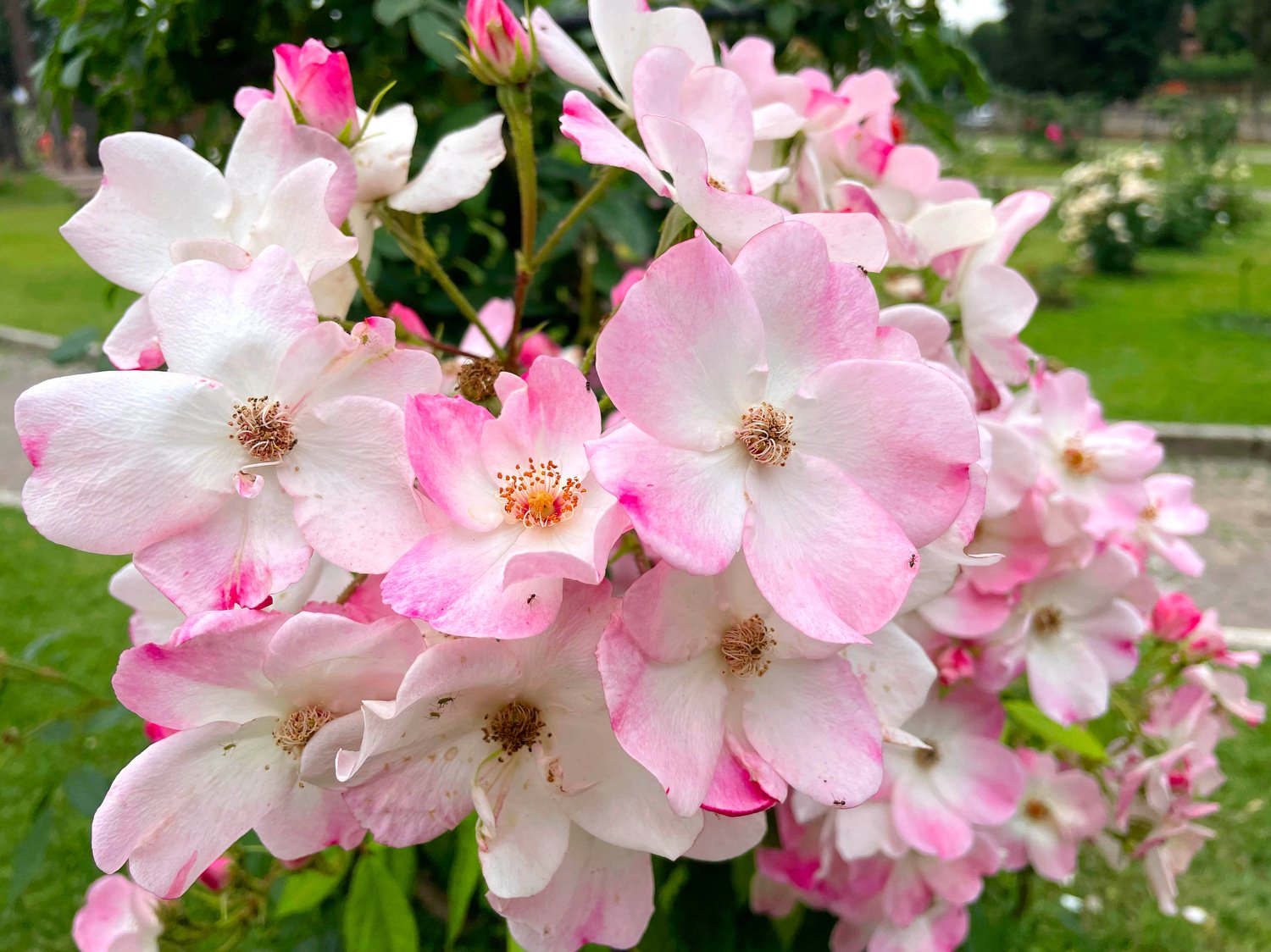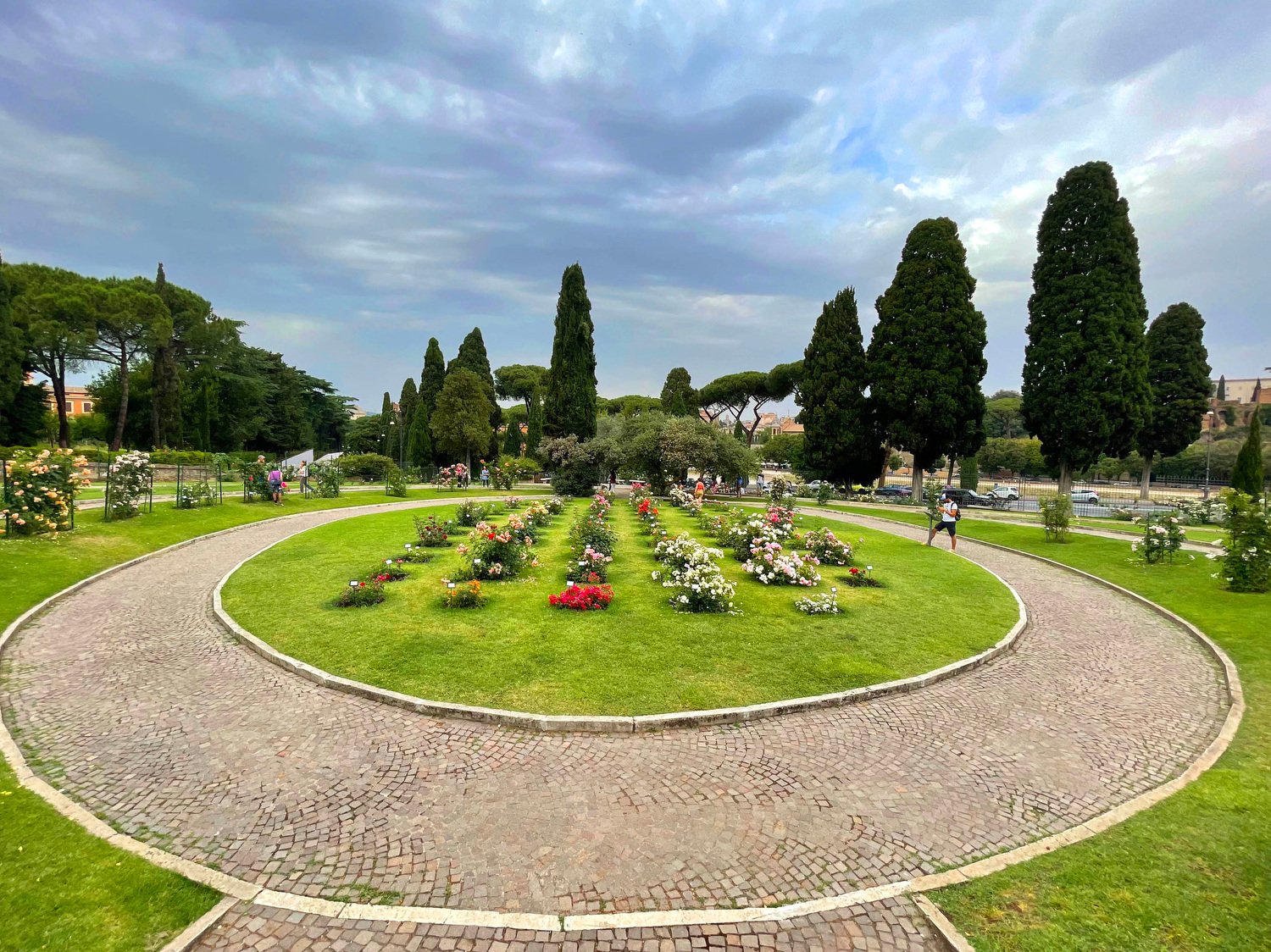The Rose Garden of Rome - a fleeting, Springtime joy
Late spring is a beautiful time to visit Rome, for the gorgeous weather and also because it’s not quite yet the full-blown tourist season. And there is also a very special treat - for only a few weeks each spring, the Rome Rose Garden is open to the public and is an oasis in the heart of the city. It’s an easy visit and it’s free.
There is just something about late May and June that I adore. School’s out, summer is just waking up, days are getting longer and joy is in the air. We have happy graduates and cookouts honoring dads. The planets are lining up in the sky, and the earth is getting ready to balance on its end for the Summer Solstice. Strawberries are in season, fireflies are starting to dance their nightly love tango, and all seems to be right with the natural world.
And of course, there are the roses.
Late spring is the time for roses everywhere, from the White House gardens to bridal bouquets, but nobody does it quite like Rome. During this beautiful season, there just seem to be blooms of all kinds everywhere; lemon and orange tree blossoms, brilliant vermillion roadside poppies, and the Roses of the Roman Rose Garden are on full display for a tiny window of time like a fragrant breeze through this hot, vibrant, busy city.
Roses - an Italian tradition
Along with the lily, the rose is one of the official flowers of Italy. Red roses often symbolize love and passion, while white can signify new beginnings; yellow for friendship, and pink for grace and admiration. Italians often give roses in odd numbers; except for the number 12, which is meant to be for marriage and lasting relationships. And show me a group of Italian women, and I’d bet that at least some of them have “Rose” in their name in some form. Italians do love their roses.
Visiting the Rome Rose Garden (The Roseto Comunale)
And so in tribute to this longtime love of roses, Rome's municipal rose garden, or Roseto Comunale, is located on the eastern side of the Aventine Hill, overlooking the Circus Maximus. Entry is free but it’s only open to the public for a short time - from April 21 (the birthday of ancient Rome) through about the second week in June.
And then this fleeting treat is over until October when it reopens briefly for autumn blooms.
The Rome Rose Garden boasts over 1,100 varieties of roses, many of them gifts from countries all around the world. The site, near the Roman Ghetto, was at one time Rome’s Jewish cemetery, which moved to the Verano monumental cemetery in 1934.
Originally there were public rose gardens in the area of the Colosseum, but those were destroyed during WWII. Eventually, in 1950, the tradition of the Roman public rose garden was re-established at the site we see here today.
As a thank you to the Jewish community, for allowing the once sacred land to be used for this purpose, a stele was placed at the entrance of the garden in memory of its origin, and the paths that divide the flower beds are arranged in the shape of the menorah, the seven-branched candelabrum, a symbol of Judaism.
The garden is divided into two sections: the higher section features a collection of classic specimens while the lower garden contains the roses reserved for the Premio Roma, a prestigious international contest.
While the upper section opens to the public on April 21, the lower section doesn’t open until after the judging, held on or around May 21.
The park also has an experimental section where new varieties of roses are grown and tested for their suitability for public and private gardens in Italy.
If you are lucky enough, as we were, to be in Rome during this festive time of year, you can easily visit the Rose Garden which is open from about 8:30 am till about 7:30 pm.
Located on Via di Valle Murcia 6, on the eastern side of the Aventine Hill, the Roseto Communale is near the Circo Massimo stop on the Metro B line.
It was a nice break for us after several busy days of sightseeing in the bustling city of Rome, dodging cars and mixing in crowds.
Looking for other things to do in Rome? Here are a few blog posts we’ve written about things to do in Rome
Circus Maximus
We took the train to Circus Maximus, and walked over to the Rose Garden. We’d seen our share of ruins at that point, but I was still glad to get a look at the Circus, which was the largest stadium in ancient Rome and built for chariot races.
We also got a great view of the Park of the Aqueducts, giant structures that once delivered fresh running water through the city. It was nice to view these impressive sights in a kind of casual way, and try to comprehend their age and history, while still having something else on the agenda to do. I’m not sure we would have made a special trip there otherwise, honestly, so it was a good excuse to go.
There was a guitarist playing sweet harmonics as we arrived in the garden and the air was beautifully scented. It definitely felt like a special place, a relaxing respite, especially knowing that would only be open for another week or so. A lovely hidden gem. We arrived at a good time of day, before dinner, when it wasn’t too hot.
This also combined nicely with an evening in the Trastevere section of Rome. It was only a short walk over the Tiber River into Trastevere, where we had dinner at Sette Oche in Altalena Pizzeria (Little Duck on a Swing - !!!). Quiet, and with far fewer cars and noise than central Rome, Trastevere blessed us with a gentle evening to end a very active trip and we welcomed it, toasting our adventures with refreshing house wine and committing to our memories the very lovely and fleeting roses of Rome.













